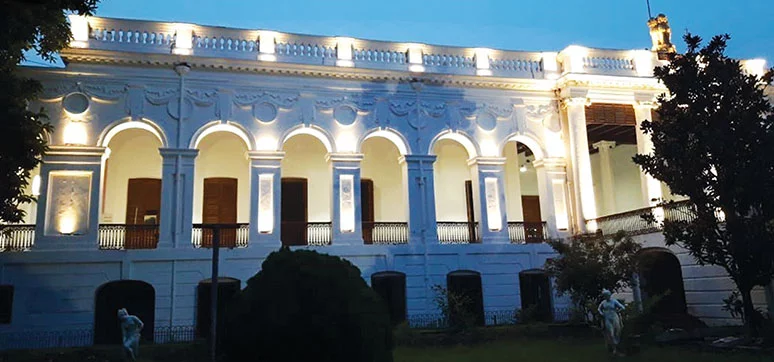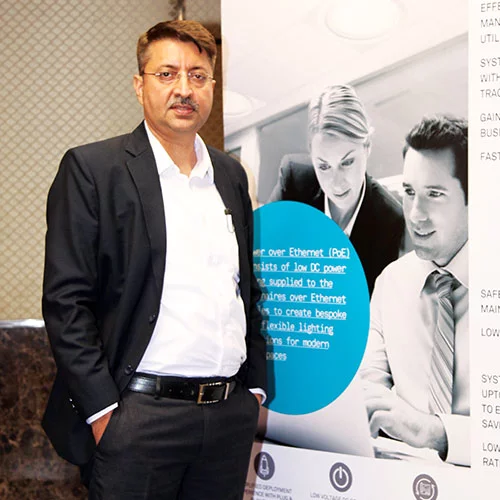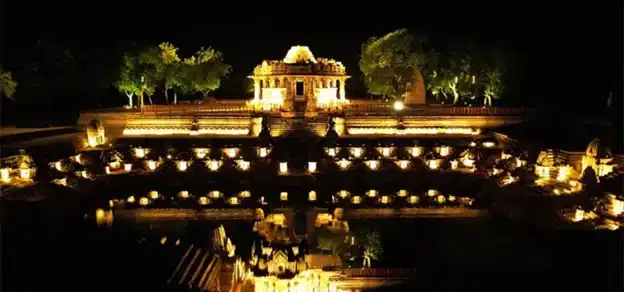What is the Importance of Façade Lighting? How can it Compliment the Exterior of a Building?
Professional outdoor lighting design can create dramatic effects with lighting buildings and structures at night. An ideal façade lighting solution addresses the functional requirements as well as highlights aesthetics of the surroundings, making it look surreal.
With the advent of the latest technologies, lighting is much beyond mere illumination. Façade lighting is done to illuminate the building exterior, mainly to enhance the building architecture or to highlight the importance of a particular structure.
Key to good façade lighting is the lighting effect without the light source visibility. Coloured beams and patterns bring in a strong element of grandeur in façades and structures. Façade lighting is an important aspect of outdoor lighting to enhance architectural focal points, improve safety and security, and increase property value.
Please Brief on Various Architectural Façade Lighting Solutions.
Architectural Façade Lighting Solutions Include:
• Linear wall washer & light bars: Used to highlight wall surface uniformly by mounting upwards or downwards as per the requirement
• In-ground lights: Used to highlight any columns with lower height to wall-wash by mounting at the base/ground
• Flexible strip lights: Used to highlight the contour of any structure
• Underwater lights: For highlighting structures below water bodies
• Wall lights: Used to create patterns on a wall surface
• Step lights: Used to highlight the steps of staircases
• Floodlights: Used to highlight any sculpture & columns or any particular side of the building for accent/contour lighting by mounting at the base of the structures.
Please List a Few Checkpoints to Consider for Best Façade Lighting Solutions.
The proposed lighting design for façade lighting should increase the beauty of the modern building complete the heritage monument and create a signature mark without affecting the structure. Lighting can be plane or dynamic as per the design intent.
The energy-saving aspect should be taken care of as façade lighting has longer operating hours. Since it’s a type of outdoor public space lighting, a higher degree of protection from the sun, wind, rain and insects needs to be considered. Theft-proof installation is recommended.
Care should also be taken to make sure that the poles and accessories used for façade lighting complement the structure and not appear sore to the viewer’s eye. The lighting materials used for façade lighting should either be concealed or placed in such a way as to not obstruct the view of the visitors in the daytime.
Please Throw some Light on the Standards, Local Norms and Regulations for Outdoor Lighting.

The Indian Green Building Council’s (IGBC) Green New Buildings Rating system prescribes reducing light pollution to increase night sky access and enhance the nocturnal environment.
The following parameters need to be followed while designing the outdoor lighting:
• Minimise light trespass from the building and site
• Reduce skyglow to increase the night sky access
• Improve nighttime visibility through glare reduction
• Reduce the development impact of lighting on nocturnal environments
Avoiding glare to reduce light pollution and being sensitive towards the creatures that are active at night, such as insects and migrating birds, is the most preliminary precaution that we have to take while lighting up façades. Scattering any light beyond the façade surfaces, either to the sides or over the top, should be avoided. Glare light scattering in the eye causes loss of contrast and leads to unsafe driving conditions.
Both the LEED and Green Globes Systems call for extremely low illumination levels at site boundaries for the park and rural settings, with moderately higher levels permitted in residential zones and somewhat higher levels in commercial and entertainment districts. Suggested means for achieving these goals include the selection of full-cutoff luminaires and low-angle spotlights, use of low reflectance exterior surfaces, and restriction of lighting to critical areas.
From an ecology perspective, supporting The Dark Sky movement, reducing light pollution will facilitate the visibility of an increased number of stars at night, reducing the effects of electric lighting on the environment, improving the well-being, health and safety of both people and wildlife while cutting down on energy usage and making the lighting sustainable.
In case of usage of certain lighting, like searchlights, we need permission from the aviation authority. We also need to take into account local traditional and cultural lighting aspects while designing lighting for façades.
What is the Impact of Façade Material on Façade Lighting? How is the Rising Trend for Glass Façades Affecting Façade Lighting?
The form of façades is determined not only by their material and shape but also by the light and its direction and colour. The appearance of a façade alters during the course of the day due to the changing direction of light and the varying components of diffuse and direct light.
For highlighting the brick-work texture, warm white is used. For highlighting metal surfaces, and wallwashing, no beam effect is used. For glass façades, interiors are brightened up and contours are highlighted to get the façade lighting effect. Indoor lighting allows the observer to see into the building. Ceiling wash lights in the indoor area emphasise the ceiling surfaces and increase the overall impression of interior brightness at night.
Please Brief on the Latest Trends in Lighting Systems and Lighting Controls.

In earlier days, façade lighting was done using MHL/HPSV floodlights, up-lighter and wall lights. With the latest developments in LED technology, dynamic façade lighting is becoming more popular. LEDs offer a variety of fixes as well as programmable colour outputs. Normally both types of luminaires i.e. fixed colour as well as fully programmable is used for façade lighting.
In case of programmable LED luminaires, each LED product has red, green and blue LED chip and the intensity of each type of LED is controlled by using a sophisticated control system in order to achieve 16 Mn colours.
The use of RGB LED luminaires is also termed as dynamic lighting solution for façade lighting. Dynamic façade lighting makes use of various shares, wattage and beam angle LED RGB luminaires along with the DMX controller. DMX controllers are more popular due to their compact size and faster rate of data transfer which is required in RGB luminaire control. This kind of dynamic lighting can create different themes like a tricolour on 15th August or 26th January to enliven the place and dynamically changing façade to increase attraction.
Wipro Lighting‘s Arcus is a premium outdoor architectural lighting solutions range that caters to multiple façade lighting requirements.
Tell us About Future Trends and Technologies in Façade Lighting.
As modern commercial buildings are becoming smarter, façades are becoming more dynamic. The future will witness dynamic lighting using transparent pixel screens as the rising trend. Also, using transparent pixel screens for animation and control of façades will be another upcoming development in façade lighting.
For monuments, bridges and heritage buildings, the use of colour-changing LEDs can easily create interesting and mesmerizing effects to highlight the beauty and grandiosity. Day by day, LED lights are becoming compact and sleek, helping to make façade lighting clutter-free. Ease of control and tuning of LED lights will help to create interesting patterns in such structures.
How can we use Façade Lighting as a Marketing Factor?
Façade lighting sets the stage for different monuments, buildings and cities, thereby shaping their image. It highlights the buildings and cities, thereby attracting more and more visitors and tourists to the place. Creative lighting patterns and textures reinforce an emotional connection to the buildings and enhance the beauty of the cityscape.
This boosts revenues and enhances prestige. Aesthetically lit façades of modern commercial buildings help in brand building by attracting more and more visitors. It also gives investors an economic incentive to renovate and upgrade property usage, thus making it economically more attractive. Thus, façade lighting creates added cultural value.
It is important to go for sustainable façade lighting having responsibility for nature, resources and the environment. How can we achieve this? Saving energy is an omnipresent challenge, façade lighting must, therefore, get to grips with ecological compatibility issues. The number of buildings that have illuminated façades is increasing sharply. All lighting entails increased expenditure on energy.
Aesthetics of buildings and cities must be weighed against the responsibility we bear in our day-to-day dealings with nature, resources and the environment. Improperly used night-time lighting can have a negative impact on the environment.
The light that is not properly directed onto a façade is perceived as distracting and an unnecessary waste of light. Such lighting disrupts the biological processes of creatures that are sensitive to light. Stray light that shines into the sky consumes unnecessary energy and adds to light pollution.
These challenges must be considered by designers and architects in their attempts to find a balance between using light in a way that saves resources and creating added cultural value. Façade lighting solutions need to be sustainable, save resources and prevent unnecessary light pollution. The use of programmable and intelligent LED lighting solutions for façade lighting is one way towards sustainability.














